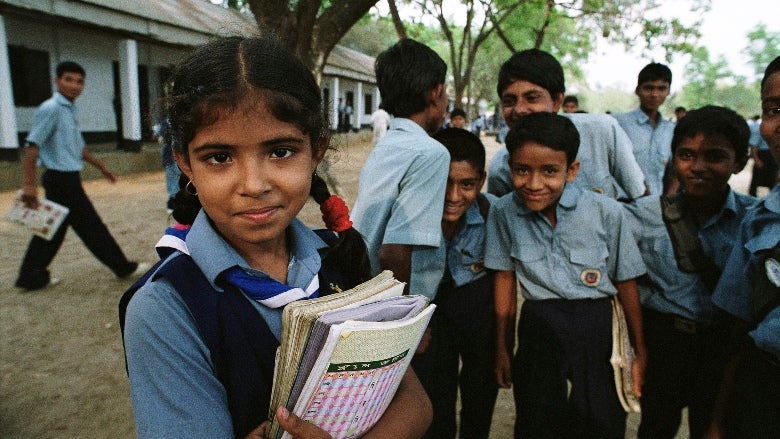 A Child in Fear Cannot Learn: Addressing the Learning Crisis with Safe and Inclusive Schools
A Child in Fear Cannot Learn: Addressing the Learning Crisis with Safe and Inclusive Schools
Learning must be a joyful experience and no learning is possible if a child is afraid of what will happen in school or if she or he experiences violence in or on the way to school. The need for urgent action becomes clear when we consider that more than half of school children experience violence from their peers and over a billion girls and boys suffer from some type of violence every year. Together, we can change this. We can lead by example first by more systematically acknowledging the issue and then looking for entry points to enhance protective factors for violence in our current and upcoming engagements.
Last week in New York, a powerful violence prevention initiative gained strength when more than 10 leaders committed their organizations to increase their emphasis on preventing violence in and around schools by signing on to the Safe to Learn Campaign. The World Bank has been part of the campaign since the beginning. Together with UNICEF, DFID, the Global Partnership to End Violence and many others, we agreed on a call to action that has already been signed by 11 countries.
To make the campaign more tangible, the Bank also contributed to the development of a comprehensive Safe to Learn diagnostic tool. This tool aims to ensure all children have access to a safe learning experience by helping countries identify assets and gaps from the policy and legislative level down to the school level. The tool, which brings the global campaign down to the country level to assess progress on the ground, is being finalized now and will be piloted in five countries (Nepal, Jordan, Pakistan, Uganda and South Sudan). In Nepal, the Bank and UNICEF are joining forces to apply the tool by the end of 2019 and then will adjust our support to reflect the findings.
This engagement in Nepal is part of the Bank’s broader commitment to school violence prevention. In fact, the Bank is pledging a renewed priority to the issue by developing a Safe and Inclusive Schools Platform aimed at institutionalizing the issue in its education programs and projects around the world. The platform includes four strategic pillars: operational mainstreaming, capacity building, analytics and global alliances.
The campaign and platform may be new, but the work has already started. A week before the launch of the Safe to Learn Campaign, I was in the Dominican Republic where we delivered a school violence prevention workshop to the Ministry of Education and the country’s Teachers’ institute. The training focused on key concepts to understand violence prevention in and around schools, the available evidence on what works, and the key elements to orient policymaking. The workshop also included an in-depth capacity building session on Nicaragua’s El Centro de Prevención de la Violencia (CEPREV) methodology that focuses on mitigating key risk factors for violence associated with the patriarchal system. The success in the Dominican Republic was immediate: the country announced the institutionalization of school violence prevention in its teachers’ training.
What the Bank is doing in the Dominican Republic is just one example of the Bank’s work in this area. We will provide details on others in the coming weeks, beginning with Brazil, Democratic Republic of Congo, and other countries where we engage proactively on the topic. Please reach out to us to learn more about the campaign and our Safe and Inclusive Schools Platform. Together we can make sure safe and inclusive schools are available for every child, everywhere.


Join the Conversation